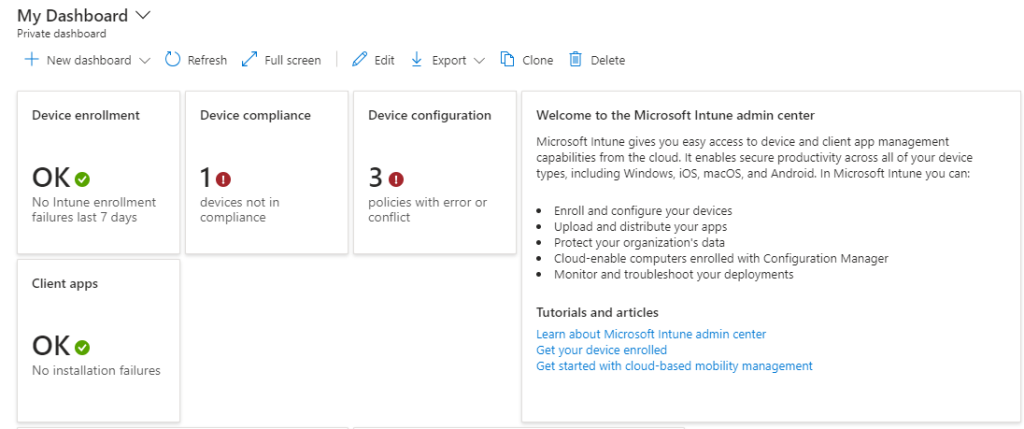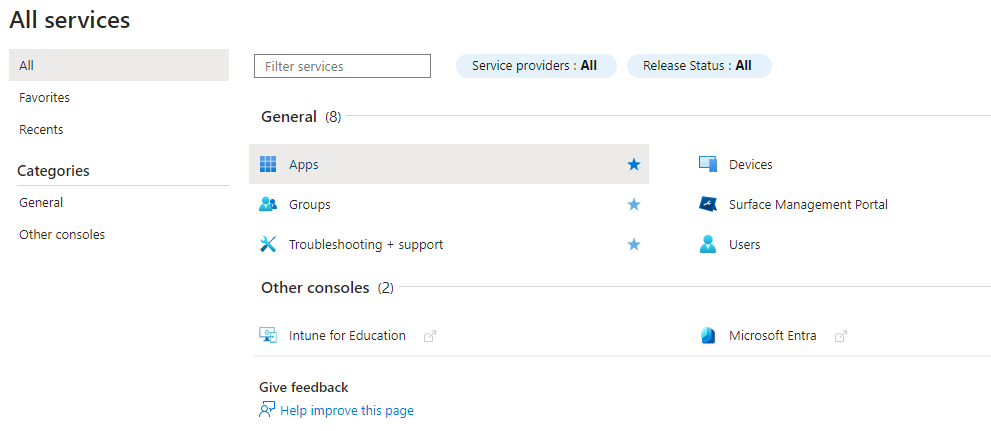What is Intune and why you need it
Intune is a cloud-based service that allows you to manage and secure your mobile devices, apps, and data. With Intune, you can:
- Enforce policies and compliance rules on your devices and apps
- Protect your data from unauthorized access and loss
- Deploy and update apps and settings remotely
- Monitor and report on device and app health and usage
Intune is ideal for businesses that want to embrace the modern workplace and empower their employees to work from anywhere, on any device, without compromising security and productivity.
How to get started with Intune
To use Intune, you need a Microsoft 365 subscription that includes Intune, such as Microsoft 365 Business Premium or Microsoft 365 Enterprise. You can sign up for a free trial or purchase a subscription from the Microsoft 365 website. Once you have a subscription, you can access Intune from the Microsoft 365 admin center or the Intune portal.

How to set up Intune for your business in 10 easy steps
Setting up Intune for your business is not complicated, but it does require some planning and preparation. Here are the 10 steps you need to follow to get Intune up and running for your business:
- Plan your Intune deployment. Decide which devices and apps you want to manage, how you want to enroll them, and what policies and settings you want to apply.
- Create groups for your devices and users. Groups help you organize and target your devices and users for enrollment, policies, and app assignments.
- Configure device enrollment settings. Enrollment is the process of registering your devices with Intune and installing the Intune management agent. You can enroll devices manually, automatically, or by using a third-party service.
- Enroll your devices. Depending on your device type and enrollment method, you may need to follow different steps to enroll your devices. You can enroll Windows, iOS, Android, and macOS devices with Intune.
- Configure device compliance policies. Compliance policies define the minimum requirements for your devices to be considered secure and compliant. You can set rules for device health, encryption, password, firewall, and more.
- Configure device configuration profiles. Configuration profiles let you apply settings and restrictions to your devices, such as Wi-Fi, VPN, email, security, and more.
- Configure app protection policies. App protection policies protect your data within your apps, such as Outlook, Word, Excel, and Teams. You can set rules for data encryption, access, transfer, and wipe.
- Configure app configuration policies. App configuration policies let you customize the behavior and appearance of your apps, such as language, theme, and login options.
- Assign apps to your devices and users. You can use Intune to deploy and update apps to your devices and users, either as required or as available. You can deploy Microsoft 365 apps, web apps, line-of-business apps, and store apps.
- Monitor and manage your devices and apps. You can use Intune to track and report on the status and health of your devices and apps, as well as perform actions such as remote lock, wipe, reset, and sync.
Conclusion
Intune is a powerful and flexible tool that can help you manage and secure your mobile devices, apps, and data. By following these 10 steps, you can set up Intune for your business and enjoy the benefits of the modern workplace. If you need more help or guidance, you can visit the Intune documentation site or contact Microsoft support.
Get support in the Microsoft Intune admin center – Microsoft Intune | Microsoft Learn

3 Replies to “How to Set Up Intune for Your Business in 10 Easy Steps”
Comments are closed.